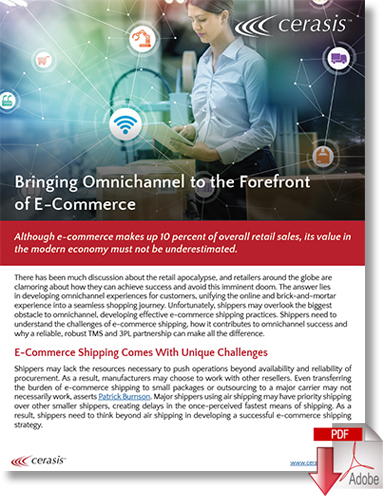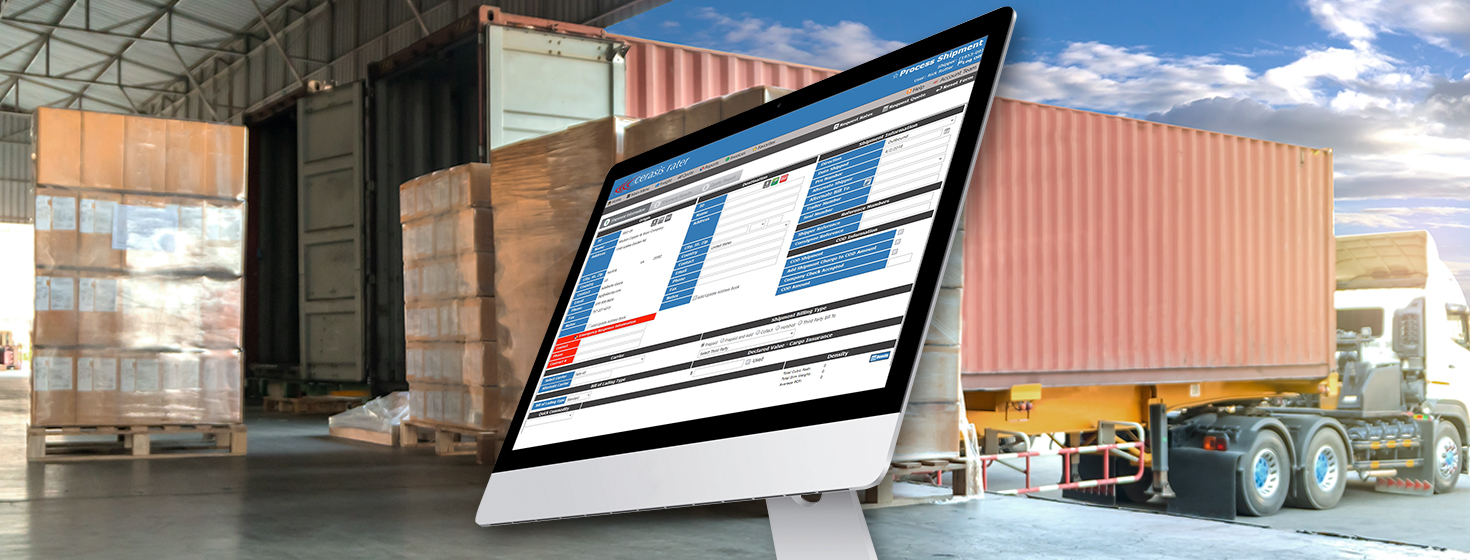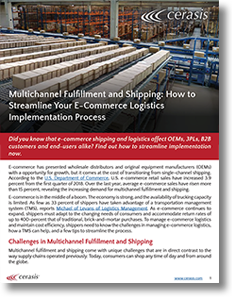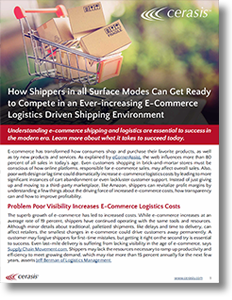The State of Ecommerce Logistics Heading into 2020 Peak Delivery Season

Successful ecommerce strategies for managing the demands of peak season revolve around how well an organization understands the state of ecommerce itself and its implications for capacity.
Ecommerce and 2020 Peak Season
As the months passed within the COVID-19 pandemic, the trucking industry appeared to make up for its startling declines.
Unfortunately, the state of ecommerce itself is presenting a new challenge and opportunity to secure additional revenue and market share going into the 2020 peak season.
This is entirely different from both peak season 2018 and 2019.
As a result, supply chain executives need to understand how this stimulation of ecommerce logistics strategies works and what is necessary to thrive through this and future disruptions regardless of peak season.
COVID-19 Stimulated Unprecedented Growth in Ecommerce in 2020 Q1
The growth of ecommerce throughout the peak season is largely reliant on consumer shopping behaviors.
According to eMarketer, an original February 2020 forecast projected modest growth of 2.8% in total retail sales through 2020.
However, ecommerce growth rates remain near growth rates of prior years despite the pandemic.
According to John Koetsier via Forbes, an Adobe study found total ecommerce sales in May 2020 jumped $52 billion, and the mobile share of ecommerce grew 10% since January.
However, the most surprising fines are those involving buying online and picking up in-store, which grew a hundred and 95% in May alone.
Moreover, total online spending has risen 77% year-over-year for May 2020.
And while this report reflects some degree of uncertainty, the demand for more ecommerce purchases and options as customers remain skeptical of returning to traditional purchasing habits is likely to increase.
The Double-Edged Sword of the Pandemic - Limited Supply Chain Resources
The massive run on necessities and goods across brick-and-mortar and online supply chains created an unusual circumstance for the industry.
According to William B Cassidy of JOC.com, US truck freight prices have generally declined throughout the pandemic.
However, expectations for a possible recovery in the fall, particularly if Congress does pass a second stimulus act, this uncertainty will fade from the peak season discussion.
The need for more capacity resources is reflected in the changing bidding habits of companies, noted Cassidy:
“Some shippers and trucking companies are exploring short-term micro- or mini-bids, a trend that tends to rise when the direction of markets becomes uncertain. I think shippers and carriers want something more dynamic. I’m seeing more companies build in a mini-bid every month or even biweekly, as they move toward continuous procurement.”
“That is likely a sign the market is in flux, and uncertain. When shippers have ample capacity and pricing power, there is little incentive for short-term bids. When capacity is tight and prices are rising, trucking companies have less incentive to agree to short-term contracts. But both sides could benefit by smoothing cyclical peaks and valleys to the extent possible,” Cassidy stated.
The clear indicators mean that as the capacity tightens, creating flexible ecommerce logistics strategies will be of top priority to source more carriers, LSPs, and supply chain partners.
Ecommerce Growth Appears to be Strengthening Despite Economic Instability
The economic instability created by the pandemic creates some confusion over how to approach ecommerce logistics strategies for peak season.
Even as industry executives worked to reallocate resources and improve access to online ordering and delivery services, the industry remains susceptible to possible changes within legislation and the pandemic itself.
According to a study referenced by Koetsier, the year-over-year growth rate for the 2019 holiday peak season was 13%.
However, the 77% year-over-year growth from May, combined with expectations for a jump to ~18% from eMarketer, mean the industry is already well above the peak levels originally expected for ecommerce in the 2020 peak season.
As a result, it is a safe assumption that actual ecommerce demands on the industry will grow past current levels until the development of a vaccine becomes reality.
Even big carriers are gearing up in anticipation of this change.
UPS announced that it would enact peak season surcharges to the tune of $3 per package for ground shipments and up to $4 per package on air freight cargo.
Those fees may not seem like a major change, but consider this, the peak season surcharges for 2019’s peak season were $0.28 and $0.99, respectively.
So, that’s a 400% to 1200% increase in these surcharges. Meanwhile, FedEx has not yet released its holiday surcharge schedule of fees, but they have indeed already implemented a coronavirus surcharge to all packages.
It’s clearly a rapid change, and since ecommerce isn’t based strictly on brick-and-mortar locations for pickup, these fees will play a huge role in the total costs for shipping ecommerce orders this year.
The Takeaway: Integrated Supply Chain Systems and Collaboration Are Crucial to Successful Ecommerce Logistics Strategies that Work in 2020 Peak Season
There’s only one solution to building successful ecommerce logistics strategies.
Companies need to integrate their systems via SaaS-based platforms and capture efficiencies where-ever possible.
Even if the industry does indeed take a hit in the form of retraction, the improvements made in anticipation of strong growth for the upcoming season will still add value.
They will still allow for more efficient supply chain management and an opportunity for future proof operations.
About the Author
Kevin Jessop oversees the overall marketing strategy for Cerasis including website development, social media and content marketing, trade show marketing, email campaigns, and webinar marketing. Mr. Jessop works with the business development department to create messaging that attracts the right decision-makers, gaining inbound leads and increasing brand awareness all while shortening sales cycles, the time it takes to gain sales appointments, and set proper sales and execution expectations.
Related Article: Ecommerce Continues Move Toward Heavier Freight Purchases
Related Ecommerce White Papers
Acing the Ecommerce and Logistics Game Means Going Back to the Basics with an Eye on the Future
In this white paper, you will learn what supply chain leaders need to understand why logistics fundamentals will continue to shape the e-commerce shipping strategy and how to master e-commerce logistics. Download Now!
Bringing Omnichannel to the Forefront of Ecommerce
This white paper is a must-read for those who are looking to go omnichannel with their supply chain and want to understand that a major part of that strategy is in the e-commerce channel. Download Now!
Multichannel Fulfillment & Shipping: Streamlining Your Ecommerce Logistics Implementation Process
This white paper is a must-read for those shippers of larger freight and surface freight who are wanting to open channels, such as direct to consumer by using e-commerce, beyond traditional ones. Download Now!
How Shippers Can Compete in an Ecommerce Logistics Driven Shipping Environment
Understanding e-commerce shipping and logistics are essential to success in the modern era, this white paper details what it takes for shippers in all surface modes to compete and succeed in today's ecommerce logistics driven shipping environment. Download Now!
More Resources from Cerasis
Article Topics
Cerasis News & Resources
GlobalTranz Appoints Executive Chairman Bob Farrell as Chief Executive Officer Amazon’s Drone Delivery Hits Milestone with Federal Aviation Administration Clearance Digital Supply Chain: The Landscape, Trends, Types, and the Application in Supply Chain Management Walmart’s Bid for TikTok Could Benefit the Retail Giant’s Ecommerce and Advertising Businesses The State of Ecommerce Logistics Heading into 2020 Peak Delivery Season Bringing Omnichannel to the Forefront of Ecommerce FedEx’s Fred Smith Optimistic About Economic Recovery as Ecommerce Business Booms More CerasisLatest in Transportation
Ask an Expert: How Shippers Can Prep for Hurricane Season UPS Struggles in First Quarter With Steep Earnings Decline FedEx Announces Plans to Shut Down Four Facilities The Two Most Important Factors in Last-Mile Delivery Most Companies Unprepared For Supply Chain Emergency Baltimore Bridge Collapse: Impact on Freight Navigating Amazon Logistics’ Growth Shakes Up Shipping Industry in 2023 More Transportation



















